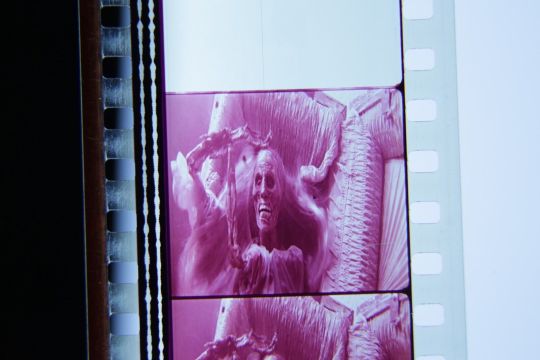#victor nelson'
Explore tagged Tumblr posts
Text
Victor is out here in nature, being his true carefree self 🌟

Victor: Hey, friends! Greetings from Chestnut Ridge!

I think he’s frolicking ^^

Victor: Yuri taught me this pose.

Victor: Yeah!

Victor: You know that feeling when you know you’re handsome?

Victor: These look pretty good. I think I’ll text them to Yuri.

Now he’s wondering what else he should take photos of, besides himself.
Victor: I’m an awesome photo subject, though.

Just Victor being cute 🥰
30 notes
·
View notes
Text
DC Comics Characters x Fem!OC
You trip a little because you were too busy staring at your crush
Characters: Bruce Wayne, Kal-El (Clark Kent), Barry Allen, Diana of Themyscira, Arthur Curry, Hal Jordan, Oliver Queen, John Constantine, Roy Harper, Koriand'r (Starfire), Kara Zor-El (Supergirl), Slade Wilson, Kent Nelson (Dr. Fate), Rachel Roth, Zatanna Zatara, Wally West, Dinah Lance, Victor Stone (Cyborg) & Shayera Hol (Hawkgirl)
Bruce Wayne aka. Batman
- Bruce Wayne is a force of nature—stoic, commanding, yet with an undercurrent of gentleness that only a few ever glimpse. You’re captivated by him, the way he effortlessly blends into a crowd yet still commands attention. That’s why you don’t see the edge of the rug in the dim lighting of Wayne Manor, tripping gracelessly. Before you can hit the ground, Bruce is there, his strong hands gripping your arms with surprising care. “Are you alright?” he asks, his voice deep and steady, concern etched into his usually impassive features.
- His hold lingers for a moment longer than necessary, his sharp blue eyes scanning your face for any sign of injury. “You should be more careful,” he says, his tone soft but firm. There’s a flicker of something in his gaze—concern, maybe even something deeper—that makes your heart race. He steps back, adjusting his cufflinks as if to regain his composure, but the subtle way his eyes linger on you betrays his own faltering calm.
- Throughout the evening, Bruce stays close, his presence a quiet reassurance. He’s the epitome of subtlety—offering you a glass of water here, gently guiding you through the crowded ballroom there. His attentiveness is masked by his usual aloof demeanor, but you catch the fleeting softness in his gaze when he thinks you’re not looking. For all his carefully constructed walls, Bruce has always struggled to hide the depth of his emotions.
- Later, when the guests have departed and the manor is quiet, Bruce surprises you by breaking the silence. “You… matter to me,” he says, his voice low, almost hesitant. He looks at you, his usual stoicism giving way to vulnerability. “I’ve lost too much in my life to ignore what’s in front of me now.” His words are raw, unpolished, but they carry the weight of his guarded heart. You reach out, your fingers brushing his, and he lets out a soft sigh, his shoulders relaxing ever so slightly.
Kal-El (Clark Kent) aka. Superman
- Clark Kent is the epitome of kindness, his warmth as disarming as it is comforting. You’ve always admired him—his strength tempered by humility, his smile as bright as the sun he draws his power from. Today, as you watch him navigate the newsroom with his usual charm, you’re so distracted that you trip over a stray power cord. Before you can hit the ground, he’s there, catching you with effortless ease. “Whoa, I’ve got you,” he says, his tone gentle and reassuring, his strong arms steadying you.
- Clark’s concern is immediate, his brow furrowing as he looks you over. “Are you okay?” he asks, his voice soft but earnest. His hands linger on your arms, his touch as steady as his gaze. When you assure him you’re fine, he chuckles softly, a sheepish grin spreading across his face. “I guess I can be a little distracting,” he teases, though the sincerity in his eyes makes it clear he’s still worried.
- Throughout the day, Clark’s attentiveness is unshakable. Whether it’s fetching you a fresh cup of coffee or subtly guiding you around potential obstacles, his protectiveness shines through in the smallest gestures. His blue eyes find yours often, his expression softening every time. When you catch him looking at you, his cheeks flush slightly, and he quickly adjusts his glasses—a nervous habit that only endears him to you further.
- Later, when the hustle of the day has settled, Clark finds you in a quiet corner of the office. “You know,” he begins, his voice low and sincere, “I’ve faced a lot of things in my life—things I never thought I’d survive. But you… you make everything feel a little brighter.” He looks down, adjusting his glasses again, before meeting your gaze. “I just hope I can be as much for you as you are for me.” His words are simple but heartfelt, and when you smile, his grin returns, radiating the warmth of a man who feels deeply and loves unconditionally.
Barry Allen aka. Flash
- Barry Allen is a whirlwind of energy and charm, his quick wit matched only by the speed at which he moves. You’re so captivated by his boyish smile and the way his hands move animatedly as he talks that you don’t see the uneven sidewalk ahead. Before you can stumble, Barry is there, catching you with a speed that leaves you breathless. “Whoa, careful!” he says, grinning as he steadies you. “You okay? That was almost a total wipeout.”
- His concern is genuine, though his teasing grin never falters. “You know, I’ve seen people fall for me before, but this is a first,” he jokes, his tone light but his hands lingering on your arms just a moment longer than necessary. When you laugh, his grin widens, and his eyes sparkle with something deeper than amusement. “Seriously, though,” he adds, his voice softening, “are you sure you’re okay?”
- Barry’s protectiveness is subtle but constant throughout the day. He’s always just a step ahead, anticipating your needs with an almost uncanny accuracy. Whether it’s holding a door open before you even reach it or catching a falling book mid-air, his actions speak louder than words. Every time his eyes meet yours, there’s a warmth there that makes your heart race, and when he blushes under your gaze, you realize he’s just as affected as you are.
- Later, when the day slows down, Barry surprises you with a rare moment of vulnerability. “You know,” he begins, rubbing the back of his neck, “I’m not always the smoothest guy around, but with you… I feel like I don’t have to try so hard.” His voice is softer now, his usual bravado giving way to honesty. “I guess what I’m trying to say is… you make me want to slow down, and that’s saying something.” His cheeks flush as he looks at you, and when you smile, he lets out a breathless laugh, his grin returning with a newfound confidence.
Diana of Themyscira aka. Wonder Woman
- Diana of Themyscira carries herself with a grace and strength that feels otherworldly. You’ve always admired her, but today, as she stands in the sunlight, her armor gleaming and her smile as radiant as the dawn, you can’t look away. That’s why you trip, your foot catching on a stray root. Before you can fall, Diana is there, her arms steadying you with effortless ease. “Are you hurt?” she asks, her voice filled with concern, her dark eyes scanning you with a warrior’s precision.
- Diana’s touch is gentle despite her strength, her fingers lingering on your arm as she helps you steady yourself. “You must be more careful,” she says, her tone soft but firm. When you assure her you’re fine, she smiles, the warmth in her expression making your heart flutter. “It is easy to be distracted by beauty,” she adds, her words carrying a hint of playfulness, though her gaze remains steady on yours.
- Throughout the day, Diana stays close, her protective instincts clearly at odds with her desire to let you stand on your own. She’s ever watchful, her presence a comforting reminder of her strength. When your eyes meet, there’s a softness in her gaze that contrasts with her usual warrior’s intensity. It’s as if she’s letting you see a side of her few ever do—a side that cares deeply and feels even more.
- Later, as the sun sets and the world quiets, Diana speaks with a rare vulnerability. “You remind me of why I fight,” she says, her voice low but steady. “Not for glory or duty, but for love—for those who make the world worth saving.” She reaches out, her hand brushing yours, her touch both tender and strong. “You are more than I expected,” she adds, her smile soft but unwavering. “And I find myself drawn to you in ways I cannot ignore.” Her words are as sincere as the Amazon herself, and as you take her hand, you feel the unspoken promise of her unwavering heart.
Arthur Curry aka. Aquaman
- Arthur Curry has always carried the weight of two worlds on his shoulders, but you’ve never seen it diminish his strength or his humor. Today, as you watch him command the attention of those around him with his booming laugh and rugged charm, you lose track of your footing and stumble on a slick patch of wet tile. Before you can hit the ground, he’s there, catching you with a strength that feels like the ocean itself. “Whoa, easy there,” he says, his voice deep and warm, his golden eyes gleaming with concern.
- His hands linger on your waist as he steadies you, his brow furrowing slightly. “You okay?” he asks, his tone softer now. When you nod, his lips curl into a crooked grin. “You’ve got to watch your step around water, you know,” he teases, though there’s a flicker of something more in his gaze—something protective, maybe even possessive. “Next time, just grab onto me. I don’t mind being your anchor.”
- Throughout the day, Arthur is never far from your side. Whether it’s his broad hand brushing yours as you walk or the way he places himself between you and the crowd, his actions speak louder than words. When he laughs at your jokes or catches your eye from across the room, there’s a softness to him that contrasts with his larger-than-life persona. And when you catch him looking at you, his grin fades into something deeper, more thoughtful, as if he’s memorizing every detail of your face.
- Later, under the quiet of the moonlit ocean, Arthur opens up in a way he rarely does. “You’re different,” he says, his voice low and earnest. “Most people see the king, the warrior… but you see me. Just me.” His fingers brush yours, his touch warm despite the cool night air. “And I think… I want to be that for you. Just Arthur.” His vulnerability takes your breath away, and as you take his hand, his grin returns, softer but no less genuine.
Hal Jordan aka. Green Lantern
- Hal Jordan is impossible to ignore—the sheer confidence he exudes is magnetic, and his grin could rival the brightest star. You’re so caught up in watching him regale the group with one of his wild stories that you don’t see the loose stone on the ground. You trip, your balance faltering, but before you can fall, Hal is there, catching you with the ease of a man who’s saved the universe a dozen times. “Gotcha,” he says, his grin widening as he steadies you. “You okay, beautiful?”
- Hal’s teasing tone is paired with genuine concern as he looks you over, his hands lingering just a moment longer than necessary. “You’ve got to watch where you’re going,” he says, his green eyes sparkling with mischief. “Though I can’t blame you if you were distracted by someone as handsome as me.” His cocky grin makes you roll your eyes, but the way he’s still holding onto you betrays the softer side he tries to keep hidden.
- The rest of the day, Hal is uncharacteristically attentive. He’s always been protective, but now it’s obvious—whether he’s keeping an arm around your shoulders in a crowded room or using his Green Lantern ring to light your path. His usual banter is interspersed with moments of quiet affection: a lingering glance, a soft smile when he thinks you’re not looking. For all his bravado, Hal’s heart is open and unguarded when it comes to you.
- Later, under the stars, Hal drops the act. “I know I come off as this fearless guy,” he says, his voice quieter now. “But the truth is, I’m terrified of losing the people I care about.” He looks at you, his usual confidence replaced by sincerity. “You… you mean more to me than I ever expected. And I’m not going to mess this up.” His words are raw, vulnerable, and when you smile, he relaxes, his grin returning as he pulls you closer.
Oliver Queen aka. Green Arrow
- Oliver Queen is larger than life, his charisma and sharp wit drawing everyone in like moths to a flame. You’ve always found it hard to look away from him, but today, as he leans against the bar, his trademark smirk in place, you’re completely distracted. That’s why you don’t notice the stray chair leg in your path until it’s too late. You stumble, but before you can hit the ground, Oliver is there, catching you with surprising ease. “Whoa there,” he says, grinning as he steadies you. “Falling for me already?”
- His teasing tone is matched by the warmth in his eyes as he looks you over, his hands steady on your waist. “You okay?” he asks, his voice softening as he meets your gaze. When you nod, his grin widens. “Good, because I’d hate to think I caused you any trouble.” He steps back reluctantly, his hands lingering for just a moment longer than necessary before he releases you.
- For the rest of the day, Oliver is his usual charming self, but there’s an added layer of protectiveness to his actions. He’s quick to offer his arm when the ground is uneven and even quicker to shoot a playful wink your way when he catches you watching him. His sharp humor is balanced by the genuine care he shows in the little things, like the way he quietly makes sure you’re comfortable in every situation.
- Later, as the two of you find yourselves alone, Oliver surprises you with his honesty. “You know,” he begins, his voice quieter now, “I’ve spent a lot of time pretending to be someone I’m not. But with you… I don’t feel like I have to.” He looks at you, his usual bravado giving way to something more vulnerable. “You see me—the real me—and somehow, you haven’t run away yet.” His grin returns, softer this time, and when you step closer, he exhales, his shoulders relaxing as he takes your hand.
John Constantine aka. Hellblazer
- John Constantine is chaos incarnate, a man who carries the weight of the supernatural world on his shoulders while masking his pain behind biting wit and a cigarette’s haze. You’re watching him in the dim light of a dingy bar, his trench coat draped over his chair, the glow of his cigarette illuminating his sharp features. You’re so lost in your thoughts that you trip over an uneven floorboard. Before you can hit the ground, John’s there, catching you with surprising swiftness. “Careful, love,” he says, his rough voice laced with amusement. “Hate to see a beauty like you bruised.”
- His hands linger as he steadies you, his smirk softening into something more genuine. “You alright?” he asks, his tone more earnest now. When you nod, he gives you a lopsided grin. “Good. Though I wouldn’t blame you if you were distracted. Happens when I’m around.” His teasing tone is classic Constantine, but the way his eyes linger on you betrays something deeper—something he’s trying hard to keep hidden.
- For the rest of the evening, John’s attention is subtle but constant. Whether it’s shielding you from the bar’s more unsavory patrons or lighting your way with a flicker of magic, his protectiveness shines through his sarcastic façade. He teases you mercilessly, but there’s a warmth in his gaze when he thinks you’re not looking—a vulnerability that feels at odds with the cocky mage you know.
- Later, as the night winds down, John surprises you by dropping his guard. “You’re dangerous, you know,” he says, his voice low and raspy. “Getting under my skin like this… it’s not bloody fair.” He exhales, running a hand through his hair as he looks at you with uncharacteristic honesty. “I’ve got demons, love—literally and figuratively. But you… you make me think maybe there’s still a part of me worth saving.” His words are raw and unpolished, but they carry the weight of a man who’s seen too much yet dares to hope.
Roy Harper aka. Arsenal
- Roy Harper is the embodiment of resilience, his charm and humor hiding the scars of his past. You’ve always admired his strength, but today, as he adjusts the sights on his bow, his fiery red hair catching the sunlight, you can’t help but stare. So much so that you miss the loose pebble beneath your foot and stumble. Before you can hit the ground, Roy’s quick reflexes have you in his arms. “Whoa, easy there,” he says with a teasing grin. “Didn’t know I was that distracting.”
- He steadies you, his hands warm and calloused from years of archery. “You good?” he asks, his green eyes scanning your face with concern. When you nod, his grin widens. “Good, because I’m not sure my heart can handle the thought of you getting hurt.” His words are light, but there’s a flicker of vulnerability in his gaze that tells you he means every word.
- Throughout the day, Roy’s attention is as playful as it is protective. He sticks close, making jokes to put you at ease, but his actions speak louder than his words. He’s always a step ahead, ensuring you’re safe and comfortable. When he catches you watching him, he winks, his grin mischievous, but there’s a softness in his expression that tugs at your heart.
- Later, as the two of you sit around a campfire, Roy’s lighthearted demeanor shifts. “You make me want to be better,” he admits, his voice low and sincere. “Not just for me, but for you.” He looks at you, his usual cockiness giving way to raw honesty. “I’ve made a lot of mistakes, but you… you make me feel like maybe I’m not just my screw-ups.” His words are quiet but powerful, and as he takes your hand, his grip is steady, grounding you in his presence.
Koriand’r aka. Starfire
- Koriand’r radiates warmth, her golden skin and vibrant hair glowing like a living sunrise. Today, as she tends to a garden, her movements graceful and deliberate, you’re utterly captivated. So much so that you don’t notice the uneven stone beneath your feet. You trip, but before you can fall, Koriand’r is there, catching you in her strong, gentle arms. “Oh, are you alright?” she asks, her voice melodic with concern.
- She holds you a moment longer than necessary, her emerald eyes scanning your face. “You must be careful,” she says, her tone earnest. “I would be most distressed if you were harmed.” When you stammer out a reply, her lips curve into a radiant smile. “It is alright,” she says warmly. “I find you quite lovely, even when you stumble.”
- For the rest of the day, Koriand’r’s kindness and attentiveness shine through. She hovers close, her concern evident in the small ways she cares for you—offering a hand when the path is uneven or shielding you from the sun with her body. Her usual exuberance softens in your presence, her laughter quieter, her smiles more intimate. When she catches you looking at her, she tilts her head, her curiosity and affection clear in her gaze.
- Later, as the two of you watch the stars, Koriand’r speaks with heartfelt sincerity. “You are like the stars to me,” she says, her voice soft. “Beautiful, constant, and full of wonder.” She takes your hand, her touch warm and steady. “You make me feel at home, no matter where I am. And for that, I am most grateful.” Her words are simple yet profound, her honesty like a balm to your soul.
Kara Zor-El aka. Supergirl
- Kara Zor-El is sunlight personified, her optimism and strength radiating wherever she goes. Today, as she helps a group of children with their science project, her laughter ringing like music, you can’t take your eyes off her. So much so that you don’t see the toy car in your path until it’s too late. You stumble, but before you can hit the ground, Kara is there in a flash, catching you with ease. “Whoa, you okay?” she asks, her voice warm with concern.
- She steadies you, her hands gentle yet strong as she looks you over. “You’ve got to watch where you’re going,” she teases, her blue eyes sparkling. “But hey, if you wanted me to catch you, you just had to ask.” Her playful grin is infectious, but the way her gaze lingers on you feels more serious, like she’s trying to read your heart.
- For the rest of the day, Kara’s attentiveness is as natural as her kindness. She stays close, her presence a constant source of warmth and reassurance. Whether it’s brushing a stray strand of hair from your face or quietly ensuring you’re comfortable, her actions speak of genuine care. When your eyes meet, her smile softens, her usual exuberance giving way to a quiet affection that takes your breath away.
- Later, as the two of you watch the sunset, Kara’s usual cheerfulness gives way to a deeper sincerity. “You remind me of home,” she says softly, her gaze fixed on the horizon. “Not Krypton, but the feeling of belonging… of being seen.” She turns to you, her eyes shining with emotion. “You make me feel like I can be more than just Supergirl. Like I can just be Kara. And that’s all I want to be… for you.” Her words are heartfelt, and as you take her hand, her smile becomes radiant, like the sun breaking through the clouds.
Slade Wilson aka. Deathstroke
- Slade Wilson is intensity personified, his every move calculated and deliberate. Today, as he sharpens his sword with precision, his one good eye glinting in the dim light, you can’t help but watch. So much so that you don’t see the step behind you until you stumble. Before you can fall, Slade’s hand shoots out, catching you with a firm grip. “Careful,” he says, his voice a low growl. “You’re not as indestructible as I am.”
- He steadies you, his hand lingering on your arm as he looks you over. “What were you thinking, staring off into space like that?” he asks, his tone stern but not unkind. When you mutter an excuse, he smirks. “If I didn’t know better, I’d think you were distracted by me.” His teasing is subtle, but the way his gaze lingers on you is anything but.
- For the rest of the day, Slade’s protectiveness is quiet but unmistakable. He stays close, his sharp eyes scanning the surroundings for potential threats. His usual cold demeanor softens ever so slightly when he speaks to you, his words less biting, his tone less harsh. When your eyes meet, there’s a flicker of something softer—something he tries to hide but can’t quite suppress.
- Later, as the two of you sit in the quiet of the night, Slade surprises you with his honesty. “You’re a distraction,” he says, his voice low and gravelly. “But for some reason, I don’t mind.” He looks at you, his gaze intense. “You make me remember what it’s like to care about something—someone. And that’s dangerous for a man like me.” His words are raw and unpolished, but they carry the weight of a man who rarely lets his guard down.
Kent Nelson aka. Doctor Fate
- Kent Nelson is an enigma, a man who carries the wisdom of ages and the burden of Fate’s mantle. His presence is serene, almost otherworldly, and you can’t help but be drawn to him. Today, as he consults an ancient tome, his golden helm gleaming in the soft light, you’re so captivated that you trip over a stray book on the floor. Before you can hit the ground, a soft golden glow surrounds you, suspending you mid-air. “Careful,” Kent says, his voice calm and measured as he gently sets you upright.
- He steps closer, his eyes searching yours with quiet concern. “Are you alright?” he asks, his tone as soothing as his magic. When you nod, he offers a small, almost shy smile. “Good. The world has enough chaos without adding unnecessary injuries.” There’s a warmth in his gaze that contrasts with his usual stoicism, a glimpse of the man behind the sorcerer’s mask.
- Throughout the day, Kent’s attentiveness is subtle but constant. He uses his magic to clear your path, his golden aura flickering softly whenever you’re near. His presence is calming, like the eye of a storm, and his rare smiles feel like small treasures meant just for you. When he looks at you, it’s as if he sees not just who you are, but who you could be—a potential that even you may not fully understand.
- Later, in the quiet of the Tower of Fate, Kent speaks with uncharacteristic vulnerability. “I’ve spent so much of my life serving the balance of the universe,” he says, his voice low and thoughtful. “But you… you remind me of what it means to simply be human.” He steps closer, his gaze steady and sincere. “You ground me in a way I didn’t think possible. And for that, I am grateful.” His words carry the weight of millennia, and as you reach out, his hand meets yours with a tenderness that feels timeless.
Rachel Roth aka. Raven
- Rachel Roth is a mystery, her dark aura both alluring and intimidating. Today, as she meditates in the corner of the room, her violet eyes closed in quiet concentration, you can’t help but be drawn to her. So much so that you trip over the edge of a rug, your balance faltering. Before you can hit the ground, a soft black energy wraps around you, setting you upright. “Careful,” Rachel says, her voice quiet but steady. “You should watch where you’re going.”
- She looks at you, her gaze calm but curious. “Were you distracted?” she asks, her tone neutral but her eyes betraying a flicker of amusement. When you nod, her lips quirk into a faint smile. “Well, try not to make a habit of it,” she says, her voice softening. “I might not always be here to catch you.” Her words are teasing, but the warmth in her eyes makes your heart skip a beat.
- For the rest of the day, Rachel’s attentiveness is subtle but constant. She stays close, her dark energy occasionally brushing against you in moments of quiet reassurance. Her usual aloofness softens in your presence, her sarcasm tempered by moments of unexpected kindness. When she catches you watching her, she raises an eyebrow, her faint smile making you wonder if she knows exactly what you’re thinking.
- Later, as the two of you sit in the glow of candlelight, Rachel surprises you with her vulnerability. “You’re different,” she says, her voice barely above a whisper. “You make me feel… calm. Like I don’t have to fight so hard to keep the darkness at bay.” She looks at you, her gaze steady but shy. “You make me feel like maybe I can be more than what I was born into.” Her words are quiet but powerful, and as you smile, her faint smile grows, her walls lowering just a little more.
Zatanna Zatara aka. Zatanna
- Zatanna’s presence is mesmerizing, her every movement imbued with an effortless elegance that feels like magic itself. Today, as she performs a small spell to entertain the group, her voice lilting as she speaks backward, you find yourself utterly entranced. So much so that you don’t see the loose rug beneath your feet. You stumble, but before you can hit the ground, Zatanna whispers a quick incantation, and you find yourself suspended in mid-air, gently uprighted by invisible hands. “Careful, darling,” she says, her tone playful. “Magic works better when you’re standing.”
- She steps closer, her sapphire eyes sparkling with concern and mischief. “Were you distracted, perhaps?” she teases, her lips curving into a knowing smile. When you stammer out an excuse, she chuckles softly. “Don’t worry. I’ll take it as a compliment.” There’s a flicker of something more in her gaze, a warmth that makes your heart skip a beat.
- For the rest of the day, Zatanna’s attentiveness is subtle but constant. Whether it’s conjuring a chair for you before you realize you need one or creating a small shield of magic to block an errant gust of wind, she seems to anticipate your needs before you do. Her usual theatrics are softened when she’s with you, her laughter quieter, her gestures more intimate. Every time your eyes meet, it feels like she’s casting a spell meant just for you.
- Later, under the moonlit sky, Zatanna’s playful demeanor gives way to sincerity. “You’re the one thing I can’t pull out of a hat,” she says softly, her voice laced with vulnerability. “You make me feel… real. Not just a magician, not just a performer. Just Zatanna.” She takes your hand, her touch warm and steady. “And that, my dear, is the most magical thing of all.”
Wally West aka. Flash
- Wally West is pure energy, his enthusiasm and humor as infectious as his speed. Today, as he zips around the room, a blur of red and gold, you can’t help but laugh. You’re so distracted that you don’t see the chair leg in your path until it’s too late. Before you can fall, Wally appears beside you in an instant, catching you with a grin. “Whoa there, beautiful,” he says, his voice warm and teasing. “Need me to slow down for you?”
- He steadies you, his hands firm but gentle. “You okay?” he asks, his green eyes sparkling with concern and amusement. When you nod, he flashes a playful smirk. “Good. Because if you’d gotten hurt, I’d never forgive myself.” His words are light, but the way he looks at you is anything but.
- For the rest of the day, Wally’s attention is as quick as his reflexes. He’s always there before you need him, whether it’s catching a falling object or pulling out a chair for you before you sit. His usual cockiness softens in your presence, his jokes more thoughtful, his smiles more genuine. When he catches you watching him, he winks, his grin wide and unapologetic.
- Later, as the two of you walk along a quiet path, Wally’s humor gives way to sincerity. “You’re my favorite kind of distraction,” he admits, his voice soft. “You make me want to slow down, to savor every moment.” He looks at you, his gaze open and earnest. “You’re the one thing in my life that feels like it’s moving at the right speed.” His words are heartfelt, and as you take his hand, he smiles, his usual energy tempered by a quiet contentment.
Dinah Lance aka. Black Canary
- Dinah Lance is a whirlwind of strength and elegance, her confidence as striking as her Canary Cry. You’ve always admired her, but today, as she moves effortlessly through the crowd, her laughter ringing like music, you’re utterly captivated. So much so that you don’t notice the edge of the stage until you trip. Before you can fall, Dinah is there, catching you with a grace that takes your breath away. “Easy there,” she says, her voice warm with concern. “Are you okay?”
- Her hands linger on your arms as she steadies you, her blue eyes scanning your face for any sign of injury. “You’ve got to watch where you’re going,” she teases, though her tone is soft. “But hey, if you wanted my attention, you didn’t have to go to such extremes.” Her playful smile is disarming, but the way her gaze lingers on you hints at something deeper.
- For the rest of the evening, Dinah’s protectiveness is evident in the smallest gestures. She keeps an arm around your shoulder in crowded spaces and subtly positions herself between you and any potential hazards. Her usual fiery confidence is tempered by a quiet warmth whenever she looks at you. It’s in the way her laughter softens when you’re near and the way her touch lingers just a moment longer than necessary.
- Later, under the glow of city lights, Dinah’s playful demeanor gives way to sincerity. “You’re something special, you know that?” she says, her voice soft but firm. “In a world full of noise, you’re the one thing that makes sense.” She steps closer, her hand brushing yours. “I’ve been through a lot, but you… you make me feel like it’s all worth it.” Her words are raw and heartfelt, and as you smile, she pulls you into a gentle embrace, her touch as fierce and tender as the woman herself.
Victor Stone aka. Cyborg
- Victor Stone is a balance of humanity and technology, his heart as strong as the metal that encases him. Today, as he works on a new project, his focus sharp and unwavering, you can’t help but admire his determination. So much so that you don’t notice the stray cable on the floor until it’s too late. You trip, but before you can hit the ground, a mechanical arm catches you effortlessly. “Gotcha,” Victor says, his voice warm despite the metallic undertone. “You okay?”
- He steadies you, his human hand brushing against yours as he checks for injuries. “You’ve gotta watch your step,” he says, his tone half-teasing. “But hey, if you needed an excuse to get close, you didn’t have to trip.” His grin is disarming, but the way his eyes linger on you speaks of genuine concern—and something more.
- For the rest of the day, Victor is quietly attentive. He adjusts the environment to make things easier for you, whether it’s dimming a too-bright light or creating a comfortable space for you to sit. His usual confidence is softened when he’s with you, his gestures thoughtful and deliberate. When he catches you looking at him, his smile becomes a little shy, a rare vulnerability that makes your heart flutter.
- Later, as the two of you sit in the soft glow of his lab, Victor opens up in a way he rarely does. “Sometimes, it’s hard to feel human,” he admits, his voice low and introspective. “But you… you make me feel like I’m more than circuits and metal. Like I’m enough.” He looks at you, his gaze steady and earnest. “You see me for who I am, and that… that means everything.” His words are quiet but powerful, and as you smile, he relaxes, his grin returning as he takes your hand.
Shayera Hol aka. Hawkgirl
- Shayera Hol is a force of nature, her strength and fiery spirit unmatched. Today, as she spars with another hero, her mace gleaming in the sunlight, you’re captivated by her sheer presence. So much so that you don’t notice the uneven ground beneath your feet. You trip, but before you can fall, Shayera is there, catching you with a warrior’s precision. “Careful,” she says, her voice firm but laced with concern. “The ground isn’t as forgiving as I am.”
- She steadies you with surprising gentleness, her intense gaze softening as she looks you over. “You okay?” she asks, her tone quieter now. When you nod, she smirks. “Good. Because if you’d gotten hurt, I’d have to hunt down whatever tripped you.” Her teasing tone is matched by the warmth in her eyes, a flicker of affection that catches you off guard.
- Throughout the day, Shayera’s protectiveness is both fierce and subtle. She walks close enough to shield you from potential hazards, her wing occasionally brushing against your shoulder. Her usual intensity softens in your presence, her sharp wit tempered by moments of quiet affection. When she catches you watching her, she raises an eyebrow, her smirk daring you to look away—but you never do.
- Later, as the two of you sit beneath the stars, Shayera’s tough exterior cracks just a little. “You make me feel… different,” she admits, her voice low and thoughtful. “Like I don’t always have to fight. Like I can just be.” She looks at you, her expression uncharacteristically vulnerable. “You’re the one thing in this world I’d fight for, not because I have to, but because I want to.” Her words are raw, her honesty breathtaking, and when you smile, she relaxes, her smirk returning as she leans closer.
#bruce wayne x reader#batman x reader#clark kent x reader#superman x reader#barry allen x reader#flash x reader#diana prince x reader#wonder woman x reader#hal jordan x reader#green lantern x reader#oliver queen x reader#green arrow x reader#john constantine x reader#roy harper x reader#starfire x reader#supergirl x reader#slade wilson x reader#kent nelson x reader#rachel roth x reader#raven x reader#zatanna x reader#wally west x reader#dinah lance x reader#victor stone x reader#hawkgirl x reader#dc x reader#dc comics x reader#dc comics imagines#dc comics headcanons#dc comics
259 notes
·
View notes
Text
Wishing my favourite canon bisexuals and biromantics a happy bi visibility day/week








(They didn't canonise bi Nora in the movie and I couldn't find the scene where Sam mentions being bi, but I couldn't not include them, so just look at 'em.)


#bisexual#biromantic#bi#bi visibility#bisexual visibility#biromantic visibility#red white and royal blue#rwrb#heartstopper#hsmtmts#doctor who#glee#xo kitty#love victor#netflix daybreak#daybreak#daybreak netflix#alex claremont diaz#nick nelson#clara oswald#sahar zahid#big red#brittany s pierce#brittany pierce#kitty song covey#lake meriwether#nora holleran#samaira dean#sam dean#bi visibility day
716 notes
·
View notes
Text

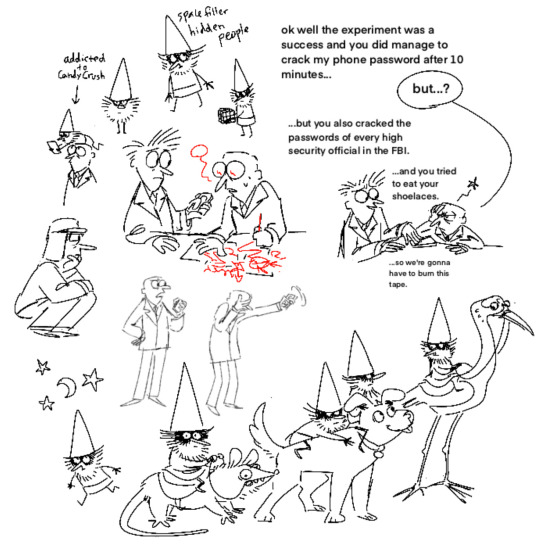
the voices from the far reaches of the ether told me to tell you they said they wanted no pickles
#puzzle agent#nelson tethers#the hidden people#jim ingraham#i think that's how it's spelled#anyways i'm doing pt 2 of that comic now that we're moved in#i listened to Secret Messages by ELO on repeat while drawing these lalala#it's a nelson song to me#and i know that jim got relocated but. i want them to be besties so bad#anyways shouts out to victor. have not stopped thinking abt this game for the past two months
85 notes
·
View notes
Text
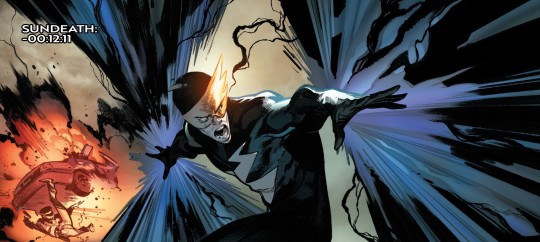
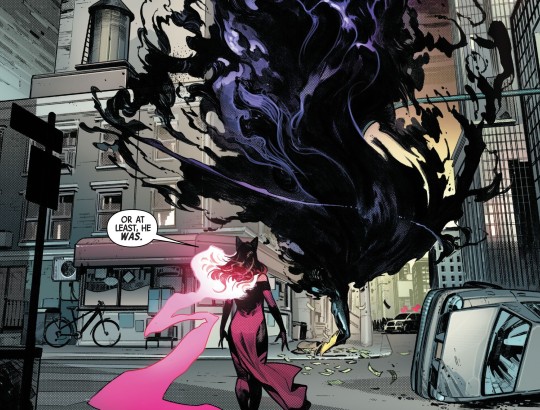
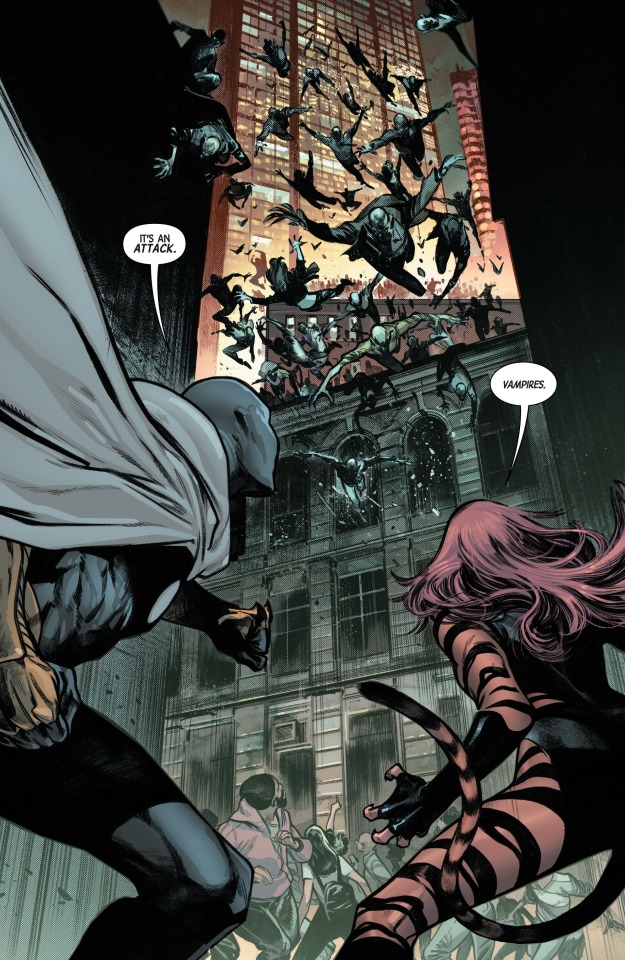
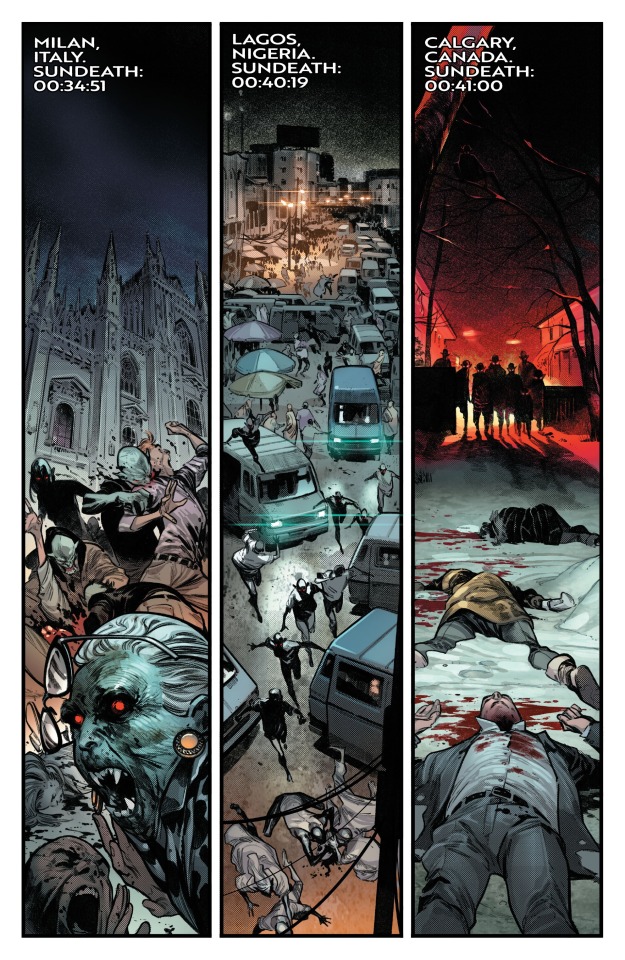
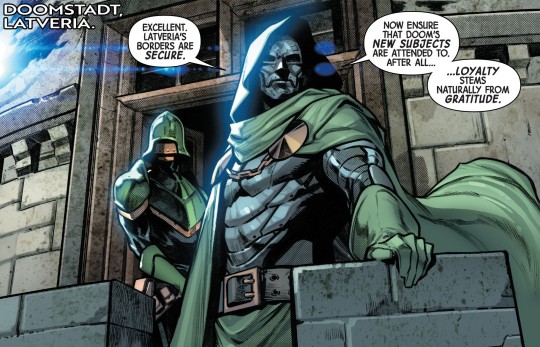
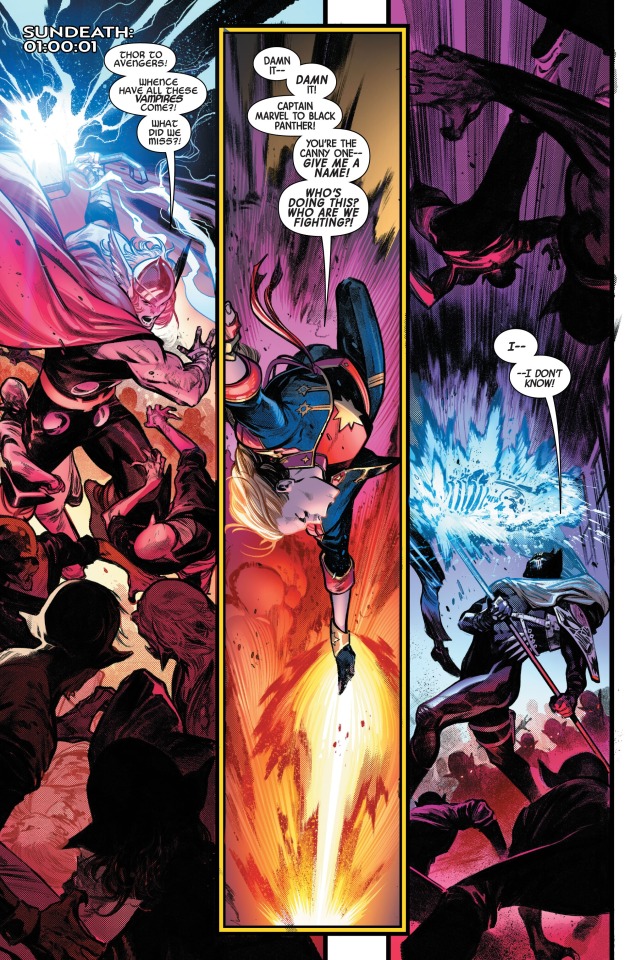

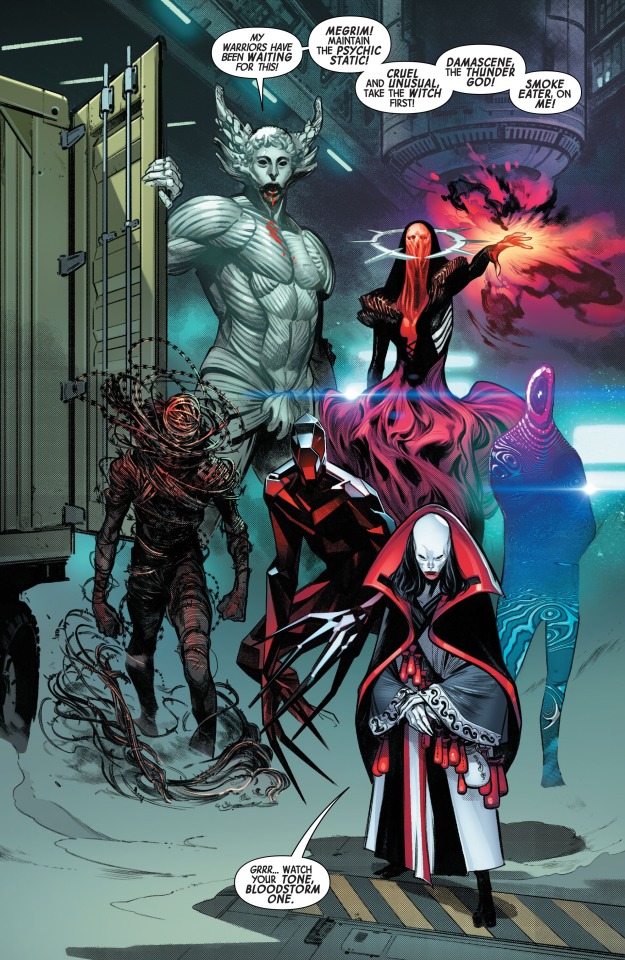
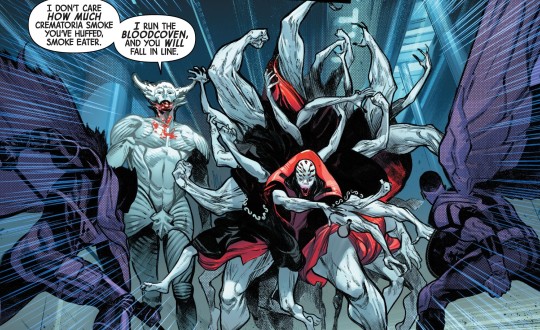
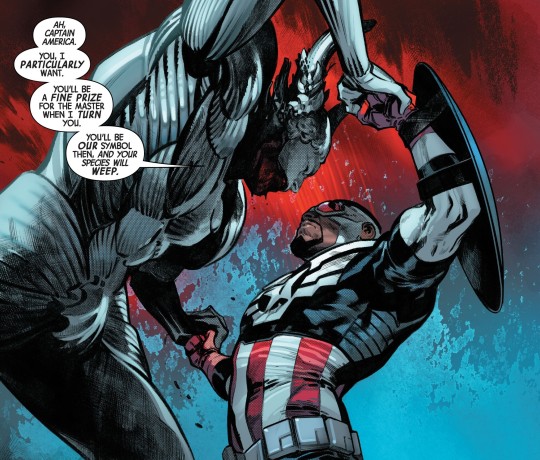
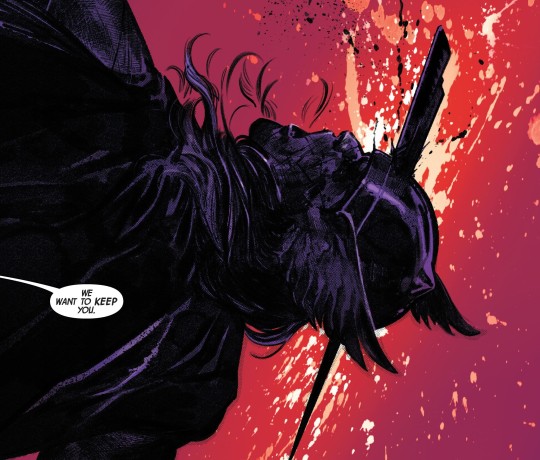
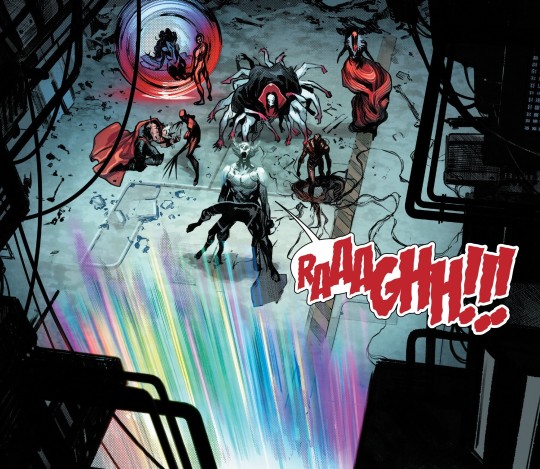
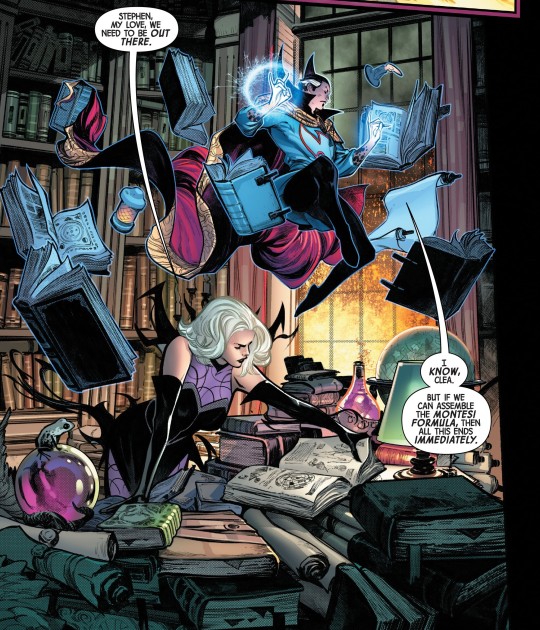
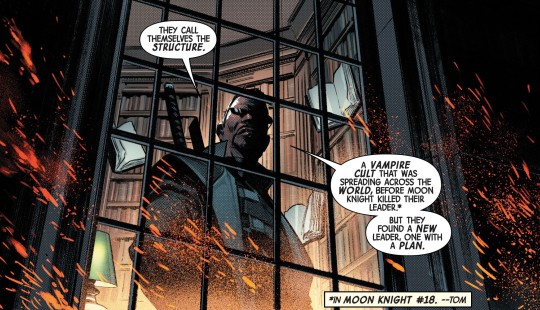
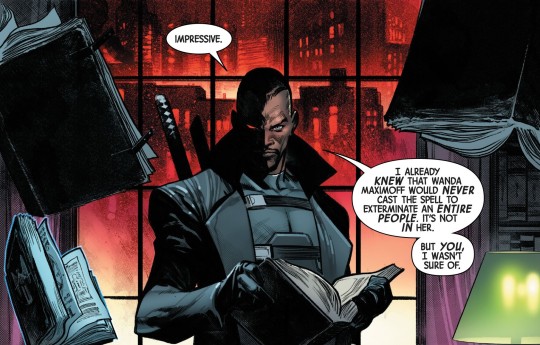
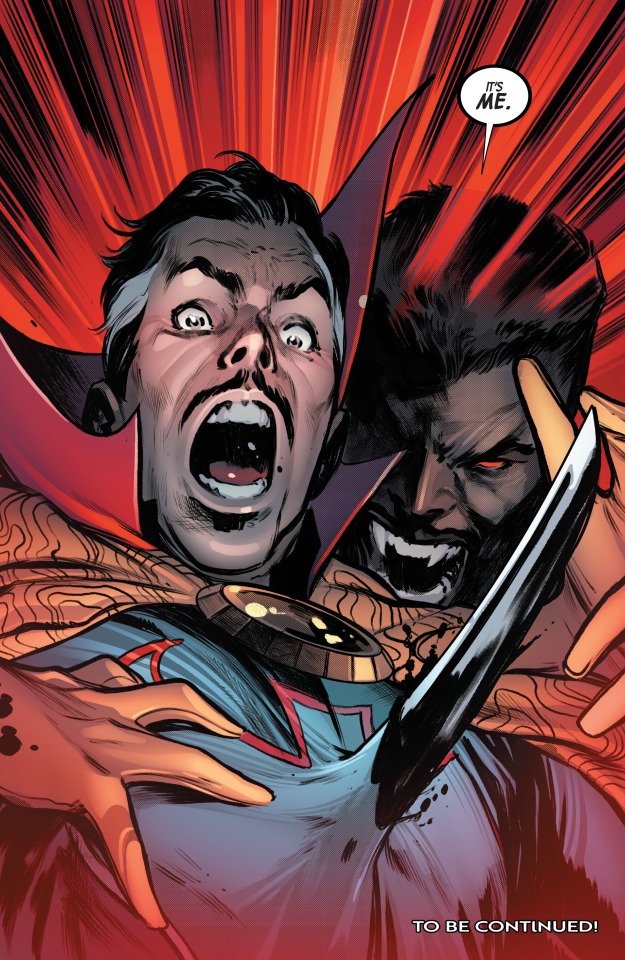
From Blood Hunt #001
Art by Pepe Larraz and Marte Gracia
Written by Jed MacKay
#blood hunt#blackout#marcus daniels#scarlet witch#wanda maximoff#hunter's moon#yehya badr#tigra#greer nelson#doctor doom#victor von doom#thor odinson#captain marvel#carol danvers#black panther#t'challa#bloodstorm one#megrim#cruel#unusual#damascene#smoke eater#captain america#sam wilson#doctor strange#stephen strange#clea strange#blade#eric brooks#marvel
26 notes
·
View notes
Text

Zack Nelson
46 notes
·
View notes
Text

Ok, so here we are. I'm gonna get it out of the way right away: When the World Tips Over is absolutely worth the wait. I must admit it's kind of overwhelming at the beginning, or maybe the right word is 'daunting'; there's just so many characters, plot threads, styles and formats. But still, once everything is in place, the book grips your soul and basically never lets go. Seeing all the pieces fall into place is a truly powerful experience. And really, Jandy Nelson's prose is masterful. You can tell how much work has gone into making this novel the best version of itself. There's a word in English which I really love, and it's the most appropriate way to describe Nelson: she's a wordsmith, period. What she does with her writing in this book is just masterful. Even the little things I wasn't feeling at first, like the instalove beginnings for some of the romantic plots, ended up winning me over. So yeah, I can tell these characters and their family saga will stay with me for a long, long time. Look, I hope we don't have to wait another decade for her next work, but if it's gonna be as brilliant as this and I'll Give You the Sun, I'm more than willing to wait.
#jandy nelson#when the world tips over#dizzy fall#miles fall#wynton fall#cassidy snow#theo fall#bernadette fournier#marigold snow#clive fall#alonso fall#sebastian ortega#maria guerrero#felix rivera#sandro the dog#victor fall#paradise falls#california#northern california#i'll give you the sun#the sky is everywhere#beautiful prose#books#young adult#ya books#reading#books and reading#queer lit#drama#romance
18 notes
·
View notes
Text









i — argent nelson, the victor of the first hunger games
Argent Nelson did not belong in District One. Anyone could tell you that. The gossiping shopkeepers and whispering customers. Stares directed towards him on the street, quickly averted when he turned their way. Old ladies on their porches squinting at him as if wondering where he had come from.
#dayne talks#thg#the hunger games#the ballad of songbirds and snakes#tbosas#character: argent nelson#district 1#thg victors#dayne’s thg victors
16 notes
·
View notes
Text
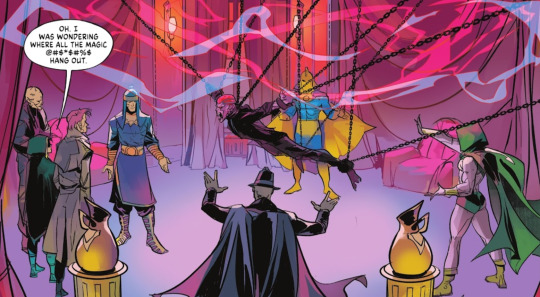
DC vs. Vampires #8, 2022 James Tynion IV, Matthew Rosenberg, and Otto Schmidt
#dc vs vampires#damian wayne#robin#john constantine#hellblazer#kent nelson#doctor fate#felix faust#phantom stranger#victor zsasz#mister zsasz#james corrigan#spectre#simon jones#psimon
32 notes
·
View notes
Text
Reblog for bilingual bisexuals



#bilingual#bisexual#lgbtqia#toh#the owl house#luz toh#the owl house luz#luz noceda#nick nelson#nicholas nelson#heartstopper#nick heartstopper#nick nelson heartstopper#queer#victor love me to death#love me to death#victor franco-santino#bisexual luz#bisexual nick nelson#bilingual luz#bilingual nick nelson#english#spanish#french#languages#love them all sm#lmtd is officially off hiatus!!#my post
36 notes
·
View notes
Text
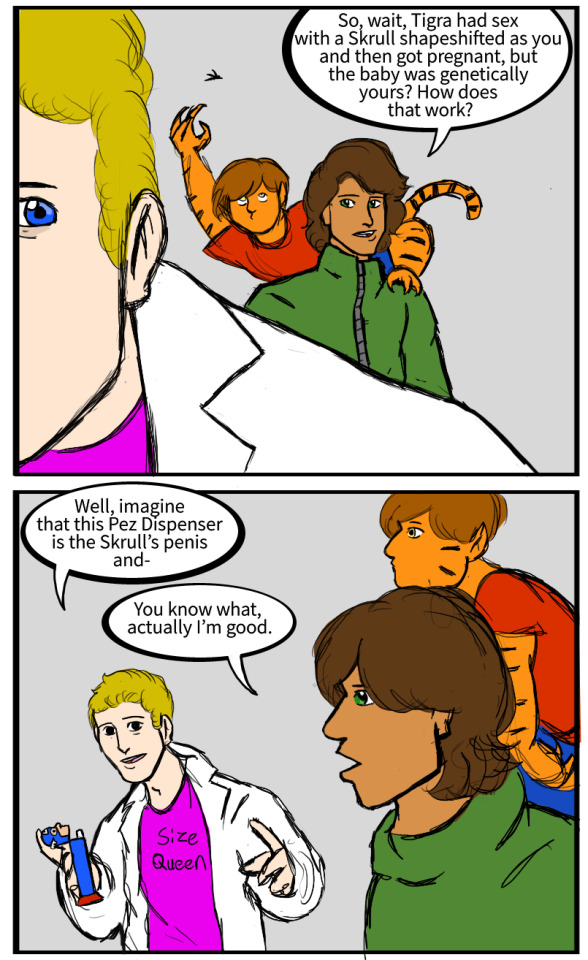
Check my Patreon out if you’d like to support the comic, even a little bit helps. Or just to check out the reward tiers, there’s some neat bonus stuff and I tried to make them fun: https://www.patreon.com/waitingforthet
136 notes
·
View notes
Text


Sachiko scared him 🥺
20 notes
·
View notes
Text
In the last 36 hours I watched: Love, Simon , Love, Victor (whole three seasons), and Heartstopper season 2.
I am not proud of it, but it is what it is.
And it was very fun.
#love victor#love simon#venji#spierfeld#heartstopper#narlie#kit connor#joe locke#nick nelson#charlie spring
72 notes
·
View notes
Text

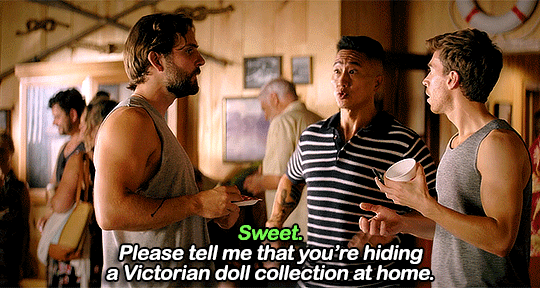
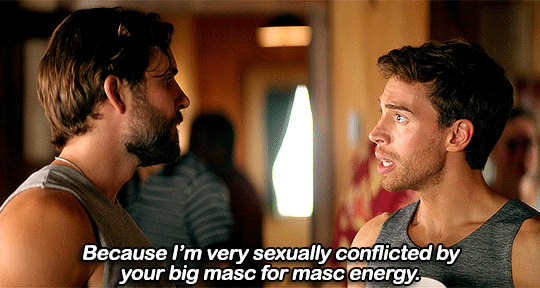

THE LAKE // 1.03 “Picnic at Raven's Rock”
#the lake amazon#the lake#lgbtedit#lgbtgifs#tvedit#jordan gavaris#justin lovejoy#travis nelson#riley rosseau#terry chen#victor lin#justin x riley#mygraphics#the lake show#gif
28 notes
·
View notes
Text
Nebraska Governor DILFs






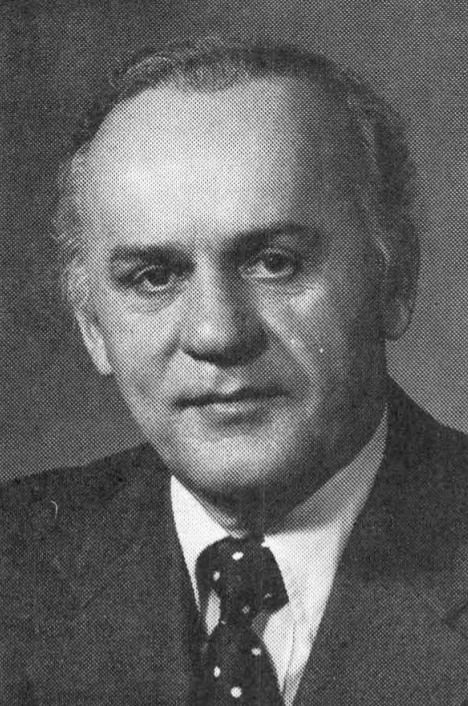



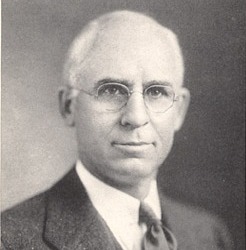
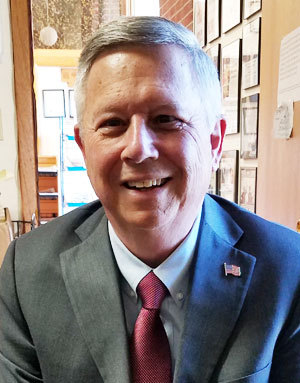



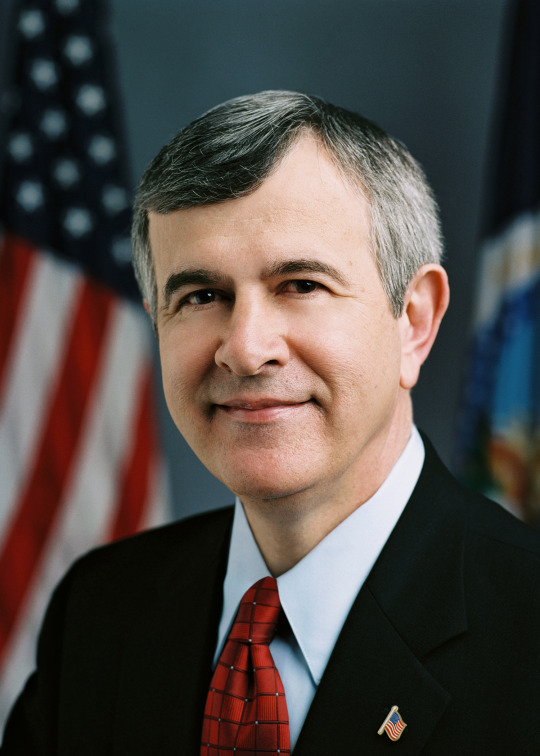

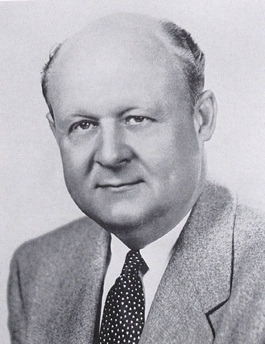
Ben Nelson, Bob Kerrey, Frank B. Morrison, Norbert Tiemann, Pete Ricketts, Arthur J. Weaver, Charles Thone, Charles W. Bryan, Dwight Griswold, J. James Exon, Robert Leroy Cochran, Dave Heineman, Dwight W. Burney, Jim Pillen, Victor Emanuel Anderson, Mike Johanns, Ralph G. Brooks, Val Peterson
#Ben Nelson#Bob Kerrey#Frank B. Morrison#Norbert Tiemann#Pete Ricketts#Arthur J. Weaver#Charles Thone#Charles W. Bryan#Dwight Griswold#J. James Exon#Robert Leroy Cochran#Dave Heineman#Dwight W. Burney#Jim Pillen#Victor Emanuel Anderson#Mike Johanns#Ralph G. Brooks#Val Peterson#GovernorDILFs
17 notes
·
View notes








